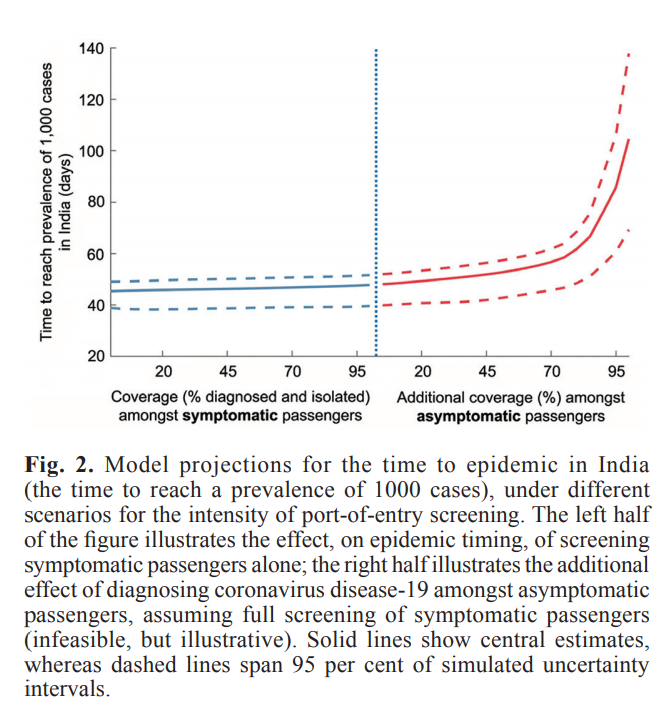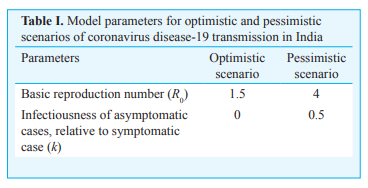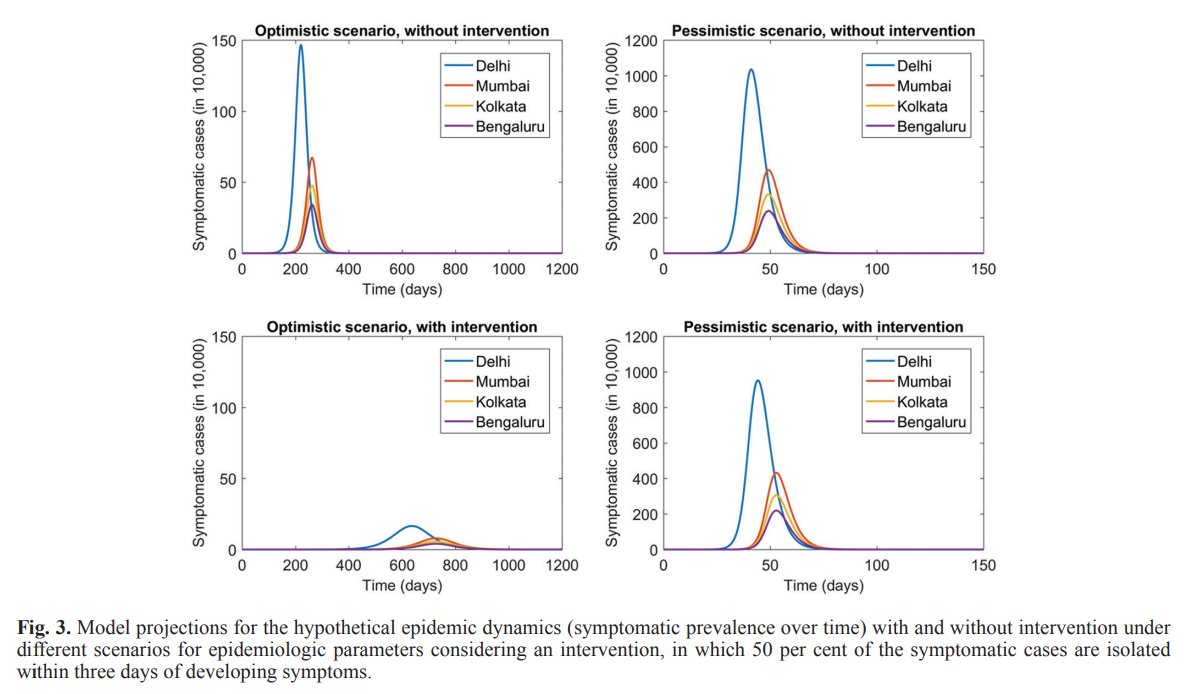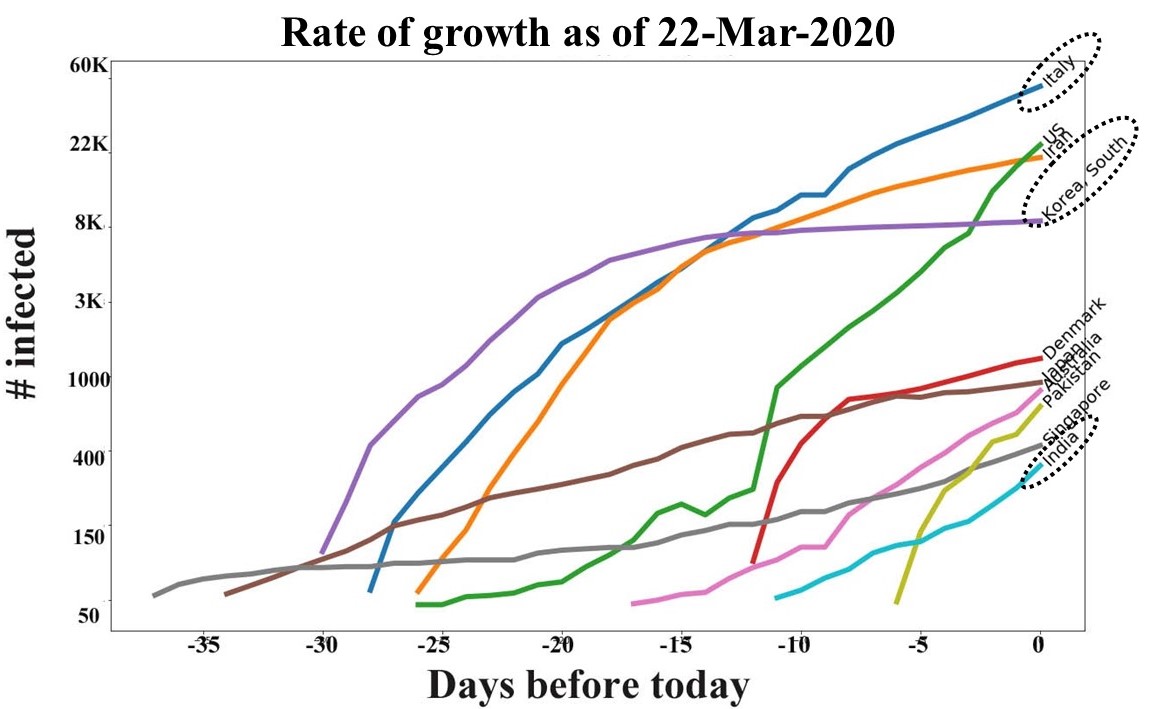- Screening all symptomatic incoming travelers would only delay the introduction of the virus in India by only 3-21 days. Because large number of asymptomatic travelers will
- Strict quarantine of symptomatic and high risk travelers would reduce overall nos of cases by 62% and the peak number by a massive 89% (flattening the curve).
- Of course the results are subject to a lot of uncertainties, however I think it effectively
GOI's strategy so far is clearly influences by this or similar mathematical modelling. Unfortunately many Citizens actively sabotaged this strategy by breaking quarantine rules.
- This also underlines the importance
The work focuses on identifying rational intervention strategies rather than predicting the spread of COVID19 infection and number
The first focus is on containment of the Virus thru Airpot screening. To evaluate impact of screening on the delay to reach 1000 cases.
Accordingly, GOI started a strict screening for all travelers coming from High-risk countries starting with China. Symptomatic and
Unfortunately we saw
So whatever any "eggspurt" may say, the real reason we were so far shielded seems to be the proactive screening at the Airports.
In a hypothetical case of Transmission starting in Delhi and
The assumed intervention here is - 50% symptomatic cases quarantined within avg 3 days of developing the symptoms.
Of course, from current revelations, COVID-19 situation seems to be between these two scenarios with lower R0 but significant asymptomatic transmission. So which strategies are likely work in this case..?
Keeping in mind the asymptomatic transmission, its important to quarantine both, symptomatic & asymptomatic cases. That's should be the intervention we should be aiming for.
Strategies to achieve the intervention -
Problem is given long incubation time of avg 14 days or likely even more in some cases, one round of testing won't be sufficient. Multiple round
theguardian.com/commentisfree/…
But there will always be danger of outbreak from another external source once things go bak
B. Full-scale lock-down for 2-3 weeks, to ensure bare minimum person-to-person contact at community level. Keep catching the symptomatic patients and limited testing to catch asymptomatic patients
There will be leaks in this too. But due to breaking of large scale asymptomatic as well symptomatic transmission chain the number of cases will remain at manageable level where they can be isolated easily. Its easy to see how
Though this approach is more practical from medical perspective, unless we figure out a way to maintain the economic activity, this will lead to prolonged reduced
But in India's case currently, where, in all probability we have a minuscule % of our total population infected as of now. Otherwise it would have been seen as a spike in ICU admission by now.
Given this situation, the lock-down with targeted










